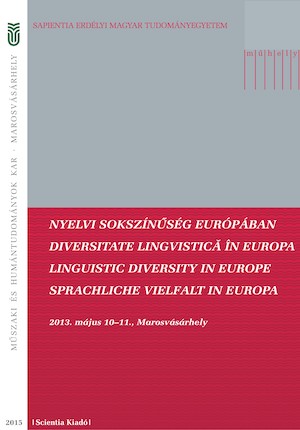A NYELVI NORMA ÉS NYELVHASZNÁLAT KÉRDÉSEI A ROMÁNIAI MAGYAR AUDIOVIZUÁLIS MÉDIÁBAN
THE ISSUE OF LINGUISTIC NORM AND LANGUAGE USAGE IN THE HUNGARIAN MEDIA OF ROMANIA
Author(s): Réka Suba
Subject(s): Media studies
Published by: Scientia Kiadó
Keywords: Hungarian media in Romania; language use; linguistic norm;
Summary/Abstract: While newspapers and magazines have a more restricted, more uniform and somehow more specialized audience, radio and television stations have a larger public, with a heterogeneous cultural background, disposing of different understanding capabilities. All these characteristics demand that these auditory and audiovisual broadcasts be as accessible as possible, allowing the viewers to understand directly, without any difficulty, the meaning of the message. The text, formulated beforehand and primarily targeting the visual receptor, i.e. the eye, must be reformulated, rewritten so that it can address the auditor’s ears. This research upon the adequacy of Hungarian media texts is part of the one carried out by Sapientia University, Faculty of Technical and Human Sciences from Târgu-Mureş, the Department of Applied Linguistics in collaboration with the National Audiovisual Council. Our research focused on the quality of the Hungarian language that was used in the Hungarian audiovisual media in Romania. Since 2010, we have conducted two weeks of monitoring annually, focusing especially on news programmes and talk shows. From a linguistic viewpoint, we monitored the verbal interactions and written messages (titration, crawls) delivered by the editors and media workers, neglecting the interventions of guests.
- Page Range: 77-85
- Page Count: 9
- Publication Year: 2015
- Language: Hungarian
- Content File-PDF

